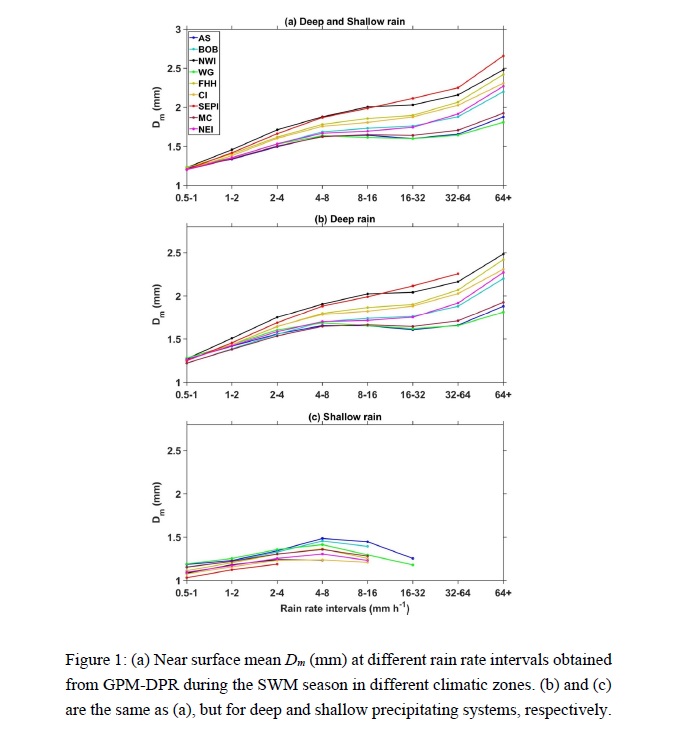Graphical Abstract
Radhakrishna, B., K. Saikranthi, and T. N. Rao, 2020: Regional differences in raindrop size distribution within Indian subcontinent and adjoining seas as inferred from global precipitation measurement dual-frequency precipitation radar. J. Meteor. Soc. Japan, 98, 573-584.
Special Edition on Global Precipitation Measurement (GPM): 5th Anniversary
https://doi.org/10.2151/jmsj.2020-030
Graphical Abstract
Plain Language Summary:
Information on raindrop size is useful not only for understanding microphysics of precipitation but also for improving quantitative precipitation estimation, attenuation correction in satellite communications and soil erosion estimates. Understanding the dominant microphysical processes occurring in different climatic regions is also essential for improving the numerical weather prediction (NWP) models. However, measurements of raindrop size are sparse over Indian region, hampering our understanding on the variability of rain drop size in different climatic zones within the South Asian Monsoon. Global Precipitation Mission (GPM) retrieved mass weighted mean diameters (Dm) have been used, for the first time, to understand microphysical variations in different climatic zones of India. Rain rate stratified raindrop size exhibits large spatial variations with larger Dm in dry regions and smaller Dm over oceans. Significant evaporation in dry regions of India and low-level hydrometeor growth over oceans are found to be the dominant microphysical processes controlling the rain drop size. It is also noted that bigger cloud drops not always yield bigger rain drops, particularly over dry continental regions, because of the microphysical processes during the drop descent.
Highlights:
- Regional differences in rain microphysics (DSD) within South Asian monsoon have been investigated for the first time using GPM measurements.
- Dm show significant spatial variations, indicating large differences in raindrop growth/decay processes in different climatic zones.
- The cloud drops are smaller in size over continental dry regions but the raindrops are larger due to the evaporation of smaller drops.







